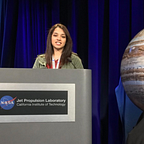Why Moon? Part 1: The Future of our Species
Humans are dying. We are a very irresponsible species. We are killing our planet and endangering our own selves despite knowing it. We’ve laid a neat, solid road to our own destruction. What’s more, even if we fix ourselves, the Sun has its eye set on us. As our star ages, it’s going to get hotter, grow bigger, and vaporate our oceans, swiftly dealing a death blow to us in the process. It’s not going to happen today, it won’t happen tomorrow, it won’t even happen a thousand years from now. Humans are doomed one way or the other, unless we colonize other worlds.
Naturally, our next abode would be Mars. We need a planet that can be made hospitable, and being just on the border of extremes, Mars fits the bill. It is cold, but the bearable kind. It’s length of day and axial tilt are very similar to the Earth’s. It is close enough to actually travel to. And our technology is slowly becoming good enough for this to be a reality in the near future. (Thanks, Elon!)
Every 2 weeks we send out a newsletter giving you an update of all that is happening at TeamIndus and opportunities for you to engage with us.
This zeroing in on Mars raises a very important question: why not the Moon? We can after all reach it in just three days. Turns out, the moon isn’t really all that hospitable for humans to settle in. And being so close to the Earth, it’s at an equal risk of being probably gobbled up by the sun anyway.
However, the moon is a very important stepping stone for us to be able to start traveling to other planets. While the Moon itself doesn’t provide suitable conditions, such as atmosphere, soil composition, presence of water, etc to sustain life, it could very well work as a base that will take us one step closer to establishing a permanent colony on Mars.
How the Moon Came to be
Nearly 3.6 billion years ago, a Mars-sized body that had been revolving around the Sun for a few centuries made a beeline for the newly formed Earth. The closer it got, the more it got attracted towards Earth. Both bodies, proto-Earth and Theia, were still not fully formed. Finally, Theia collided with proto-Earth, vaporizing part of it.
During the collision, Theia transferred all the material from its core to Earth’s core, and the broken pieces of this body started coalescing with the broken pieces of proto-Earth. The heavy metals clumped together first, forming the Earth’s core. The lighter ones accumulated around, thanks to gravity; the lightest ones swirled around the new Earth as debris. For several years, Earth had this ring of rocks, stones, dust, and gases around it.
The debris itself was starting to coalesce. As it did so, it got bigger. As it got bigger, it started developing its own gravity and attracted more particles. Eventually, very much like how the planets formed around the Sun, our Moon formed around the Earth.
